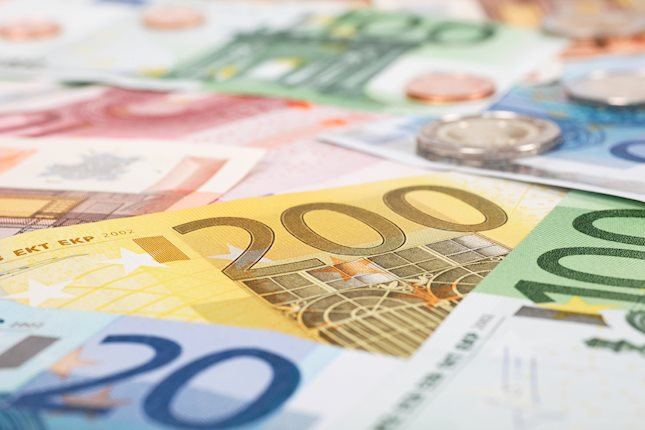- Australian dollar swoons as US currency makes a strong comeback.
- Rising US Treasury rates support a surge in the greenback.
- Risk currencies sink as economic worries abound.
Last week’s Australian dollar recovery came to naught in five sessions as rising US Treasury rates drove the aussie to a 17-year low against the American currency below even the collapse in value during the financial crisis.
The Australian dollar’s open on Monday at 0.6609 beneath the Friday close of 0.6638 set the tone for the week and aussie finished progressively lower each session, Monday 0.6587, Tuesday 0.6504, Wednesday 0.6483, Thursday 0.6236, Friday 0.6224.
Two factors propelled the American dollar higher. The selling panic that accompanied the huge rotation into US Treasuries and plunged the 10-year return to all-time low of 0.498% on Monday reversed and by Friday’s finish the yield had gained 49 basis points to 0.983%. By mid-week with equites gyrating on central bank and Coronavirus developments the revived US Dollar resumed its traditional role as the choice of risk-off traders everywhere. The currency of a resource based economy tied to the mainland Chinese was no one’s first or second option for investment.
Australian statistics March 9-13
Tuesday
The National Australia Bank’s business confidence and conditions indexes for February were worse than forecast: -4 on a flat forecast and January’s -1 for confidence and 0 on a 3 prediction and 2 in January for current conditions.
The Westpac consumer confidence index for March came in at -3.8%, well below its -0.4% projection and February’s 2.3% reading. It was the lowest confidence score since October.
Australian statistics March 16-20
Tuesday
The Westpac leading index for February will give some indication how the Australian economy entered the Coronavirus crisis but the impact will be muted awaiting more timely data. January’s reading was 0.05%
Thursday
The down under economy is forecast to have created 11,600 new jobs in February following January’s 13,500. If accurate the January and February average of 12,550 would be little more than a third of the November/December rate of 33,600. The unemployment rate is expected to drop 0.1% to 5.2% and the participation rate to be unchanged at 66.1%.
FXStreet
Australian statistics conclusion
As in other countries markets are awaiting the first data from March in order to gauge the economic impact of the global spread of the Coronavirus and the precipitous decline in equity markets. The sole March information, the Westpac consumer confidence number was far weaker than expected but it was better than recent reading in October 2019, -5.5% and July -4.1%. It is does not represent dire conditions for the Australian consumer.
In lieu of hard economic Information markets will continue to be whipsawed by government, central bank and viral developments.
US statistics March 9-13
Economic information that reflects the situation prior to the advent of the virus has ceased to affect markets which remain focused on government and central bank issues.
Tuesday
Inflation was slightly higher than forecast in February at 0.1% on the month and 2.3% annually in the headline and 2.4% on the year in the core and 0.2% for the month.
Thursday
Initial jobless claims in the first week of March at 211,000 and 214,000 in the 4-week moving average show no impact from the partial economic shutdown in China or its supply chain disruptions in the US. This statistic is one to watch in the next weeks for evidence of layoffs when and if domestic business begins to slow.
Friday
Michigan consumer sentiment for March, the first consumption oriented information was a bit stronger than forecast at 95.9 over 95.0 though down from February’s 101 which was the second highest reading since the recession. If this attitude holds up it is good news for the US economy which is 70% consumption based.
FXStreet
US statistics March 16-20
Tuesday
Retail sales for February are forecast to gain 0.2% after January’s 0.3% rise. Sales ex-autos are expected to be unchanged at 0.3% and the control group to rise 0.15 following flat in January.
Wednesday
The Federal Reserve rate decision dominates the agenda. After the emergency cut of 0.5% last week the futures markets expects further action from the central bank. Either a 50 basis point cut, 24.3% or a 75 point one, 75.7%. The Fed announcement on Friday of additional bond purchases likely increased the rate cut odds.
Thursday
Initial jobless claims for the March 13th week. Any hint of layoffs will worry investors.
US statistics conclusion
The relative unimportance of economic data that does not include the post-viral panic has another two weeks to run before markets begin to see March information. The Michigan consumer sentiment reading for March, which will be revised on the 27th was encouraging, but insufficient to draw any solid conclusions about consumer spending.
As such the week ahead will be full of headlines from governments, markets, central banks and officials of all stripes and briefs but little concrete economic information.
The dollar has been revived by the reversal in the Treasury market. In the near term it is likely to reflect the government and central bank actions of the United States in comparison to Europe, Japan and the rest of the world
AUD/USD technical outlook
The relative strength index entered oversold territory on the 11th as the AUD/USD crossed 0.6500.
The three moving averages have been in decline since 2018. The 21-day since that February and the 100-day and 200-day since April. In the current state of affairs the RSI index and the moving averages are little more than descriptive.
The three closest support lines are at 0.6122, 0.6020 and 0.5918. All date from January and February 2003 and their strength should be judged accordingly.
Resistance lines are at 0.6327, 0.6429 and 0.6531 and though recent with good supporting trade interest in markets that are fundamental and event driven they may not perform.
AUD/USD sentiment poll
The long decline in the AUD/USD has left the natura lmarket inclination to anticipate a reversion.
The one week view, perhaps shocked by the plunge has shifted to neutral from bullish. The bullish sentiment is 39% vs 75%, bearish 38% from 8% and neutral 23% vs 18%. The 0.6254 forecast is far below last week's recovery aimed 0.6692.
The one month outlook remains bullish 68% vs 60%, bearish unchanged at 24% and sideways diminished 8% vs 16%. The forecast at 0.6496 is two figures below last week's 0.6698.
The one quarter view also stays bullish 76% vs 43%, becomes less bearish 19% vs 24% and has almost eliminated neutral 5% vs 33%. The forecast of 0.6592 vs 0.6719 is also reversion based as is the overall AUD/USD view.
From a technical and forecast point of view the long trend in AUD/USD is ripe for recovery but that will not occur until the current fundamental factors have run their course
Information on these pages contains forward-looking statements that involve risks and uncertainties. Markets and instruments profiled on this page are for informational purposes only and should not in any way come across as a recommendation to buy or sell in these assets. You should do your own thorough research before making any investment decisions. FXStreet does not in any way guarantee that this information is free from mistakes, errors, or material misstatements. It also does not guarantee that this information is of a timely nature. Investing in Open Markets involves a great deal of risk, including the loss of all or a portion of your investment, as well as emotional distress. All risks, losses and costs associated with investing, including total loss of principal, are your responsibility. The views and opinions expressed in this article are those of the authors and do not necessarily reflect the official policy or position of FXStreet nor its advertisers. The author will not be held responsible for information that is found at the end of links posted on this page.
If not otherwise explicitly mentioned in the body of the article, at the time of writing, the author has no position in any stock mentioned in this article and no business relationship with any company mentioned. The author has not received compensation for writing this article, other than from FXStreet.
FXStreet and the author do not provide personalized recommendations. The author makes no representations as to the accuracy, completeness, or suitability of this information. FXStreet and the author will not be liable for any errors, omissions or any losses, injuries or damages arising from this information and its display or use. Errors and omissions excepted.
The author and FXStreet are not registered investment advisors and nothing in this article is intended to be investment advice.
Recommended Content
Editors’ Picks

EUR/USD stabilizes near 1.0550, looks to post weekly gains
EUR/USD continues to fluctuate in a tight channel at around 1.0550 in the American session on Friday as trading action remains subdued with US financial markets heading into the weekend early. The pair looks to end the week in positive territory.

GBP/USD loses traction, retreats below 1.2700
After climbing to its highest level in over two weeks at 1.2750, GBP/USD reverses direction and declines to the 1.2700 area on Friday. In the absence of fundamental drivers, investors refrain from taking large positions. Nevertheless, the pair looks to snap an eight-week losing streak.

Gold pulls away from daily highs, holds near $2,650
Gold retreats from the daily high it set above $2,660 but manages to stay afloat in positive territory at around $2,650, with the benchmark 10-year US Treasury bond yield losing more than 1% on the day. Despite Friday's rebound, XAU/USD is set to register losses for the week.

Bitcoin attempts for the $100K mark
Bitcoin (BTC) price extends its recovery and nears the $100K mark on Friday after facing a healthy correction this week. Ethereum (ETH) and Ripple (XRP) closed above their key resistance levels, indicating a rally in the upcoming days.

Eurozone PMI sounds the alarm about growth once more
The composite PMI dropped from 50 to 48.1, once more stressing growth concerns for the eurozone. Hard data has actually come in better than expected recently – so ahead of the December meeting, the ECB has to figure out whether this is the PMI crying wolf or whether it should take this signal seriously. We think it’s the latter.

Best Forex Brokers with Low Spreads
VERIFIED Low spreads are crucial for reducing trading costs. Explore top Forex brokers offering competitive spreads and high leverage. Compare options for EUR/USD, GBP/USD, USD/JPY, and Gold.